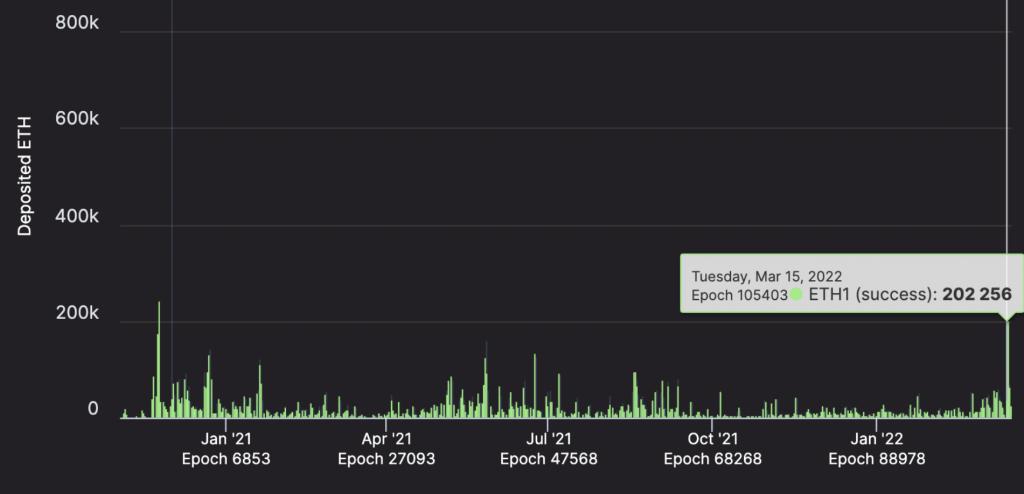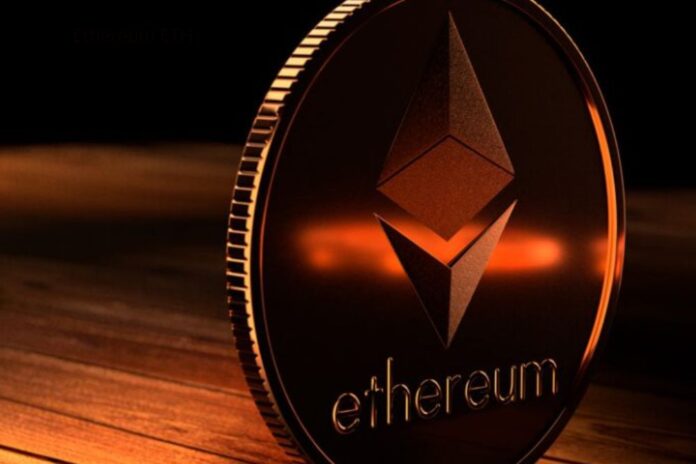Consensus Layer (Ethereum 2.0) deposit contract has recently seen its biggest one-day spike since the launch of Beacon Chain in December 2020.
Over 200,000 ETH worth $550 million were sent to Ethereum 2.0 deposit contracts on Tuesday. This amount represents over a 200% increase compared to the staked amount of the previous day.
Read Also: Ethereum Fees See Massive Drop on Layer-2s as a Transaction Now Costs Less Than $0.1
This implies that someone sent about 150,000 ETH to the Beacon Chain at once.

Who Could Have Sent This Whopping Amount? ConsenSys Comes To Mind
It can be recalled that ConsenSys, an Ethereum’s dev house, announced that it’s set to convert into ETH relatively $450 million raised from a number of investors such as Microsoft.
ConsenSys noted:
“The proceeds from the round will be converted to ETH. This further builds ConsenSys’ ‘ultra sound money’ position in advance of Ethereum’s upcoming merge to Proof of Stake.”
So, it seems the conversion has been initiated and sent directly to Beacon Chain. Since 150,000 ETH is relatively $400 million and such a transaction has never happened since the genesis of Beacon Chain, it can be deduced that ConsenSys is behind the whopping transaction.
It could also be an increase in confidence of staking within the Ethereum community, following the launch of The Merge on the testnet.
Read Also: Puma Registers Its Own Ethereum Name Service (ENS) Domain, Changes Twitter Name To Puma.eth
What the Merge Is Bringing to the Ethereum Network
The Merge completely removes miners from having any role to play on the Ethereum network. The major upgrade will make validation to be performed by stakers that deposit 32 ETH.
Currently, about 309,000 validators have collectively staked over 10 million ETH in the Beacon Chain. Once the upgrade is fully implemented on the mainnet this year as expected, these validators will be the ones running the Ethereum network instead of miners.
The upgrade is estimated to reduce Ethereum’s environmental impact by 99.9% and lower its inflammatory rate from about 4% a year to between 0.2% and 1% a year.
Follow us on Twitter, Facebook, Telegram, and Google News


